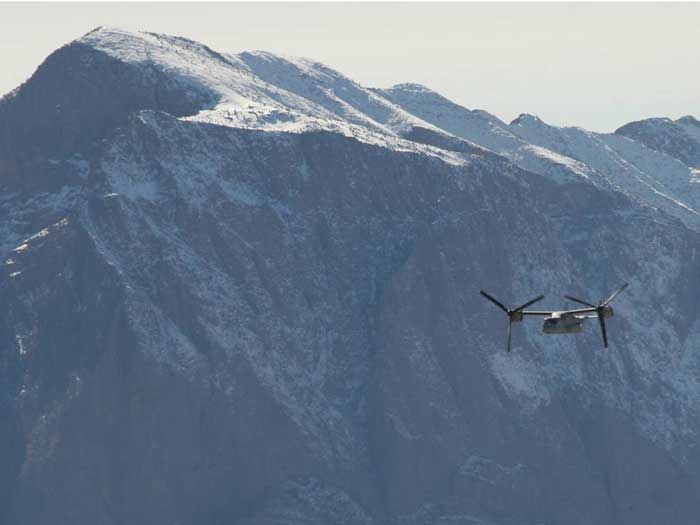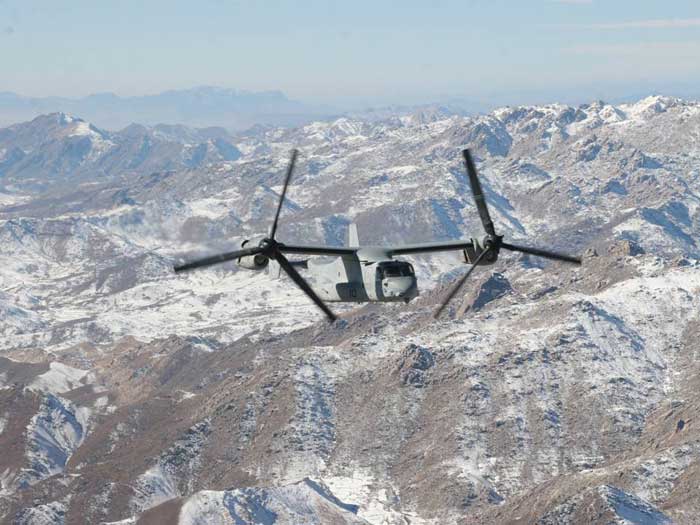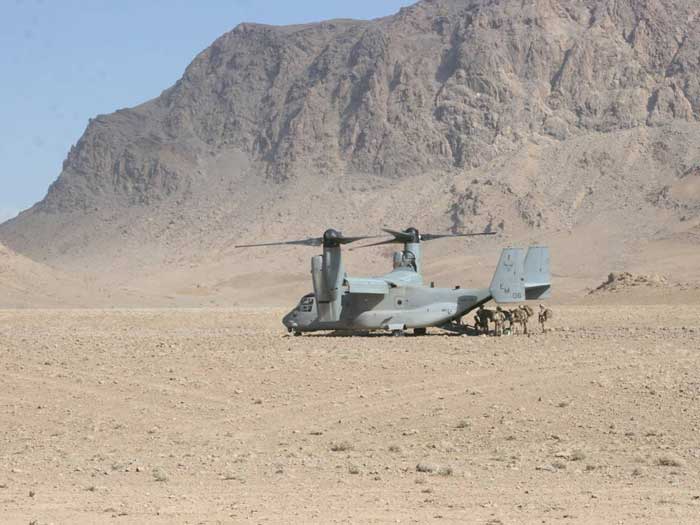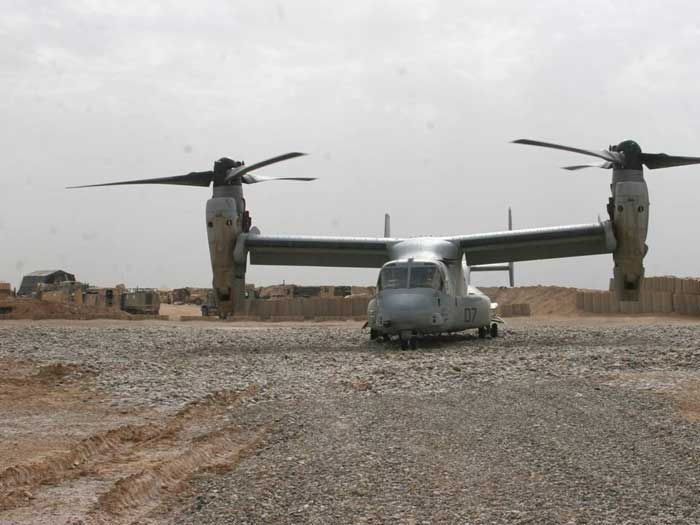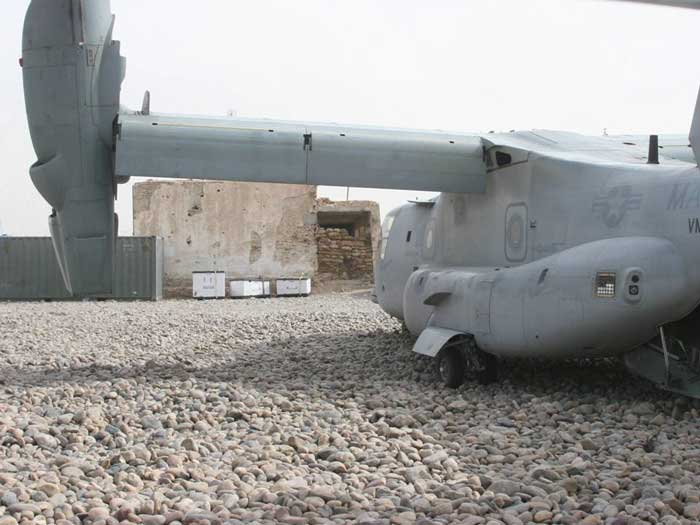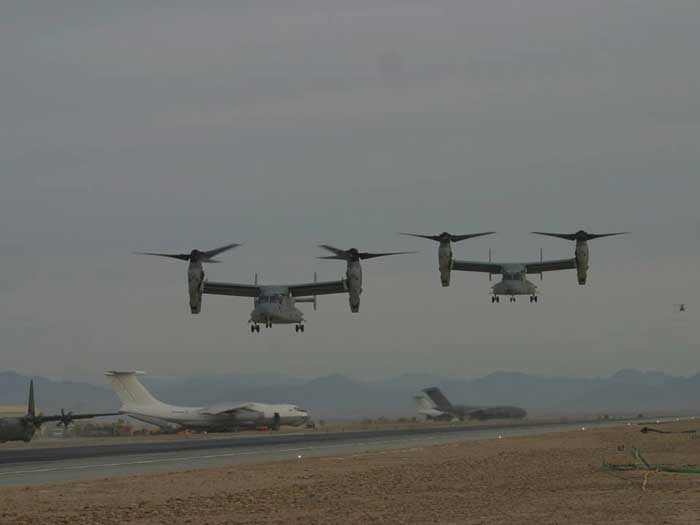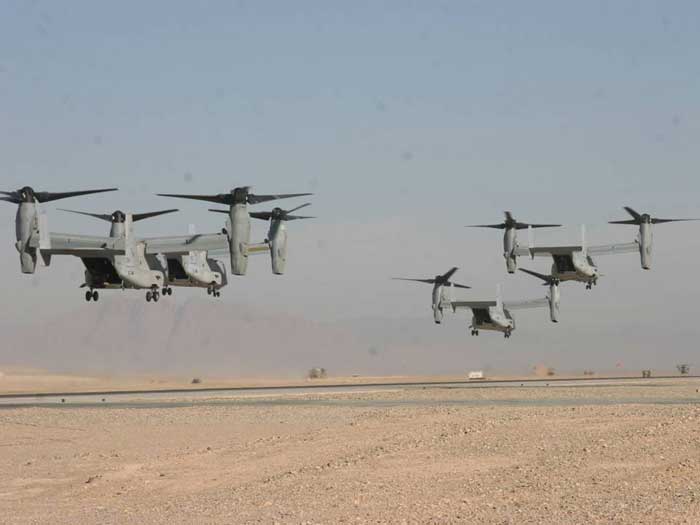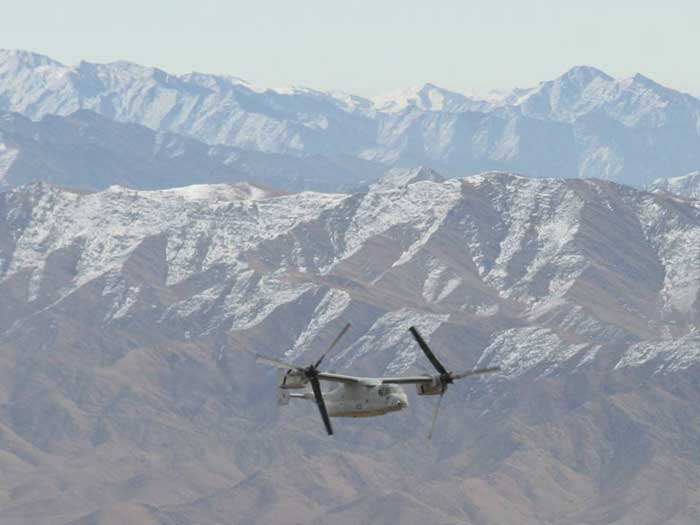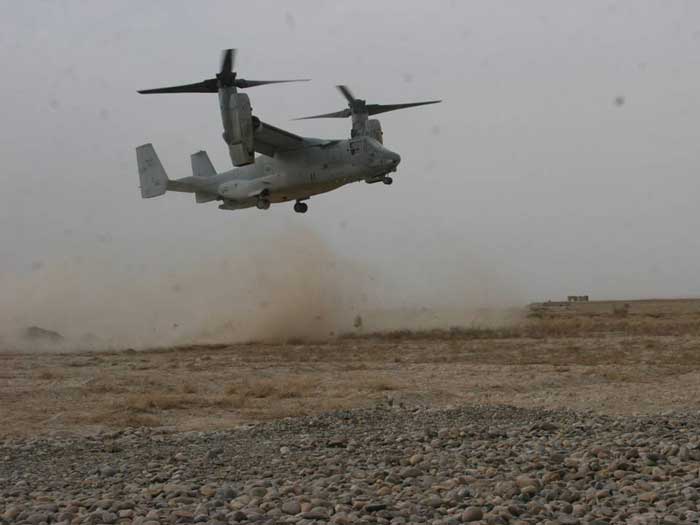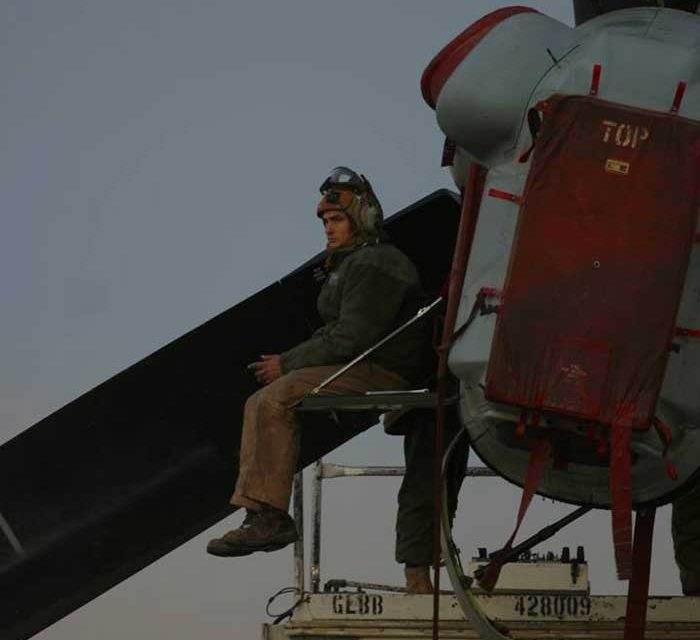By Robbin Laird
I have followed the coming of the Osprey to the USMC since 2007 and our team has visited several global geographical locations where Marines operate the Osprey.
Observations of how the Osprey has impacted Marine Corps operations can be identified which clearly are relevant to the Indonesian military if they were to acquire the V-22.
With the Indonesians indicating their interest in buying and operating the V-22, I am going back over my own experiences with the Marines as they have introduced, evolved and developed the Osprey and the impacts which the Osprey has had upon their concepts of operations. This includes as well, working new ways to get better use out of their other combat assets.
The Osprey provided a key element for disruptive change.
But the adaptation of other combat assets to the coming of the Osprey and the evolution of Osprey con-ops to those adaptations is a key part of the story as well.
I will deal in this article with two such lessons learned which are clearly relevant to Indonesia, with its geography and topography.
In later pieces I will address additional lessons learned of relevance to the Indonesia case.
Range, Speed, Vertical Lift: Ability to Operate in an Expanded Area of Interest
The first observation comes from when the Osprey first showed up in Iraq.
Because it was the only vertical lift asset which could cover the entire country, a major challenge for the Marines was ensuring that they could use their aircraft for a combat priority.
The problem: VIPs quickly identified this as the aircraft of choice for moving around the country safely, and quickly.
As we noted in a story highlighting the use of the Osprey in Iraq:
As one Marine commented: “The MV-22 in the AO was like turning the size of the state of Texas into the size of Rhode Island.”
It was the only “helicopter” that could completely cover Iraqi territory. And in this role, the testing of support as well as operational capabilities was somewhat limited as Marines tested out capabilities and dealt with operational challenges. The plane was largely used for passenger and cargo transport in support operations in difficult terrain and operating conditions.
And its impact was immediate.
As Major General (Rtd.) Walsh, then the air boss of Marine Air in Iraq commented:
“With the CH-46s in Iraq, I had to put out Forward Arming and Refueling Points (FARPs) to support them. This meant sending convoys, equipment, and Marines out to operate and secure the FARPs. This also required protecting the FARPs after they were in place.
“With the Osprey, I could simply leap past all of that. The Osprey completely changed how we operated. The demand became to use the Ospreys throughout Iraq because it could go through Iraq in one day easily, and just run around the battle space. It changed completely how we used our heliborne assets.”

For Indonesia, the area coverage which Osprey provides compared to traditional rotorcraft or the landing flexibility it provides compared with fixed wing lift aircraft are clearly significant.
Almost certainly, VIPs will find this aircraft, with its speed and range and its ability to land in vertical space, a high demand asset.
Ospreys will provide the Indonesian military with new options.
And these options can be exercised in either VIP transport, or HADAR disaster relief management, or an ability to survey the area of interest and to place the insertion force in the most efficacious location in the area of interest.
Osprey in Counter-Insurgency Operations
The second lesson learned was how the V-22 could be used quite differently from rotorcraft in terms of counter-insurgency operations.
This was evident from its initial use in Afghanistan.
In a telephone interview I did with an Osprey squadron shortly after an engagement with the Taliban, it was clear that the capabilities of the Osprey provided significant advantages over traditional rotorcraft in terms of an ability to prosecute COIN operations.
The interview with Lt. Col. Bianca conducted on February 9, 2010 was conducted by phone with the sound of the Ospreys coming back from an engagement with the Taliban.
This was an early combat experience for the Osprey but was a harbinger of things to come.
I will quote that article at length here for its relevance to Indonesia is palpably obvious.
SLD: As you arrived in Afghanistan, can you tell us about the challenges you generally have had to face as a Marine supporting the ground forces?
Lieutenant-Colonel Bianca: The nature of this particular environment is distributed operations, which – frankly – the V-22 excels at. We operate primarily in the Helmand province, but we do fly to the far reaches of the country, which we have done several times, just because we can. Also, because typically the forces and the leadership want to go places where there is no runway, and the V-22 can get you there.
Distributed operations are mostly outlying bases and living with the people out in their village and their township. One of the advantages of the airplane is the fact that it allows us to land literally at dozens of these places in a single day, move mail, food, water, and in some cases, building equipment. We have run the whole gamut of support operations. We’ve done external lift operations. We’ve done deliberate actions for basic assault insert, looking to kick in the door.
But day-to-day, we basically circulate and circumscribe the battlefield. And we do that in concert with the H-53s. Typically, the H-53s or the other aircrafts will work closer to Camp Leatherneck, while the V-22s will range out to the far reaches: that kind of burden-sharing works out pretty well for operational support.
SLD: It seems like one way to look at what the V-22 is doing is providing a very different kind of infrastructure than a classic rotorcraft or a fast jet can provide for the operational commander: would you agree?
Lieutenant-Colonel Bianca: I would say that is absolutely correct. And this is true not just for pure military operations, but also in support of the political process closely associated with the military and security operations. For example, when a Shura Tribal Council is to be held, a big issue is getting everyone together in a timely fashion to reduce the security risk to the council from Taliban attacks. The Osprey can uniquely bring folks together and move them after the meeting in a very timely manner.
There have been one or two times where we had to go get a guy literally on the border with Iran and another guy from the other end of the country from the border of Pakistan. And if you didn’t have V-22s, you could not have done that without taking several days to transport these guys.
SLD: So, just to underscore this point, the Marines talk about distributed operations and the role of the V-22 in those operations. But what you are highlighting is how, in addition, it fits the real political context of Afghanistan, as well as the need to bring the dispersed tribal leaders together to support the effort in Afghanistan and to prepare for the transition, is this correct?
Lieutenant-Colonel Bianca: Well, that is correct. And again, we are trying to put people, and policy makers, people who can have an impact together in certain places at certain times.
The nature of mobility is characterized by three things; speed, range, and payload. If you need mobility, -“hey, I just got here in Kandahar, and I need to go see this place and this place and this place, so I can get this non-government agency eyes-on” – well then, we are your platform, and I guarantee you, we are going to get that mission.
The same thing with most of the VIPs who come from America, e.g. the undersecretary for agriculture, the various service committee members, representatives, etc . If you need to see a lot of things, then we’re going to put you on a V-22, because you’re going to see everything in this province in a day. We’ll get you there and back in a day. There are no airports; we carry the airport with us.
SLD: A recent press piece focused on the role of the V-22 in Afghanistan as “ferrying around” troops. Given what you are saying and the impact which you have in shaping operational capabilities, it looks like the Osprey’s role is going rather beyond just transporting troops and doing something akin to classic rotorcraft transport: would you agree with such an assessment?
Lieutenant-Colonel Bianca: Well, you are absolutely correct. Here is something that no-one ever thinks about until one gets here. It is one thing for me to do an assault support mission where I insert troops to a location. It is quite another to talk about distributed operations.
In other words, if I am here at this airport, the troops I have to move are way over there, and the place I got to get them to is way over that way and if you want to do this in one cycle of darkness, you are going to have to put some speed on it, or you are going to have to make this a two-day evolution to move the troops here, and then get them there, so that you can do the mission.
You cannot lose sight of that either. So, even if it was to be characterized very placidly as “ferrying” of troops, there is that speed component. Football is a game of inches: combat is a game of minutes or even seconds, and that can matter.
From the distributed angle, never forget that the troops just get on the airplane here at Camp Leatherneck: they are not here at Camp Leatherneck; they are always somewhere else.
We have to go there first and then, move them to wherever the operation is going to go. And whatever one’s characterization of the operation – whether it is an assault or a town meeting -, it is time-urgent mobility.
We are moving folks to places in this country that you just cannot get to in a timely manner any other way. You simply cannot. You cannot get in a car and drive there. You can get in a helicopter and fly there, but that is going to take you two and a half or three hours. Your only option is to get into a V-22, because “I got to get to that corner in the open world –- no roads, nothing there -, we got to go do it”, and that, then, becomes our mission.
SLD: So basically, isn’t the V-22 providing a very different understanding of mobility in terms of leveraging operations, timeliness, and ability to create a result that a classic rotorcraft just could not deliver?
Lieutenant-Colonel Bianca: That is correct.
That was from 2008.
It is also the case that because rotorcraft operate a certain way and the insurgents prepared their defenses in terms of how rotorcraft operate, the tiltrotor’s ability to fly over the fight and land flexibly meant that in Afghanistan the Osprey became a force multiplier for sure.
In an interview I did with the recently retired Assistant Commander of the USMC after his return from Afghanistan in 2012, General Walters highlighted the Osprey impact:
The beauty of the speed of the Osprey is that you can get the Special Operations forces where they need to be and to augment what the conventional forces were doing and thereby take pressure off of the conventional forces.
And with the SAME assets, you could make multiple trips or make multiple hits, which allowed us to shape what the Taliban was trying to do.
The Taliban has a very rudimentary but effective early warning system for counter-air.
They spaced guys around their area of interest, their headquarters, etc.
Then they would call in on cell or satellite phones to chat or track.
It was very easy for them to track.
They had names for our aircraft, like the CH-53s, which they called “Fat Cows.”
But they did not talk much about the Osprey because they were so quick and lethal.
And because of its speed and range, you did not have to come on the axis that would expect.
You could go around, or behind them and then zip in.
There is more to learn from how the Marines have shaped a way ahead for the Osprey and evolved their integrated combat capabilities and I will discuss further lessons learned in future articles.
But for now, one can highlight a number of characteristics of the Osprey demonstrated by the Marine’s operating experience and clearly of central relevance to Indonesia.
First, the greater speed and operational reach of the Osprey compared to rotorcraft means that the insertion time for the force is significantly reduced.
And the ability to combine speed with vertical landing, means that the Osprey can operate without the landing space of a fixed wing lift aircraft.
Second, the Osprey has been used to provide for tactical surprise in COIN operations.
The long-range infiltration, runway independence, and endurance of the aircraft compared to rotorcraft contributes to the kind of tactical surprise crucial to special mission units.
And the Marines experience in this area can be seen in conjunction with how the USAF has used its aircraft as well.
Third, clearly, the range, speed, landing flexibility of the Osprey allows the Indonesian military to rethink how they can exercise operational influence across the archipelago.
In short, Indonesia faces a significant opportunity to not just buy a new aircraft, but to leverage the USMC experience of leveraging it for disruptive change which enhances force capabilities, rather than undercut them.
The photos from Afghanistan were provided by Lt. Col. Bianco as part of his interview.
Also, see the following:
The Osprey and HADR Missions in the Pacific: The Indonesian Opportunity


